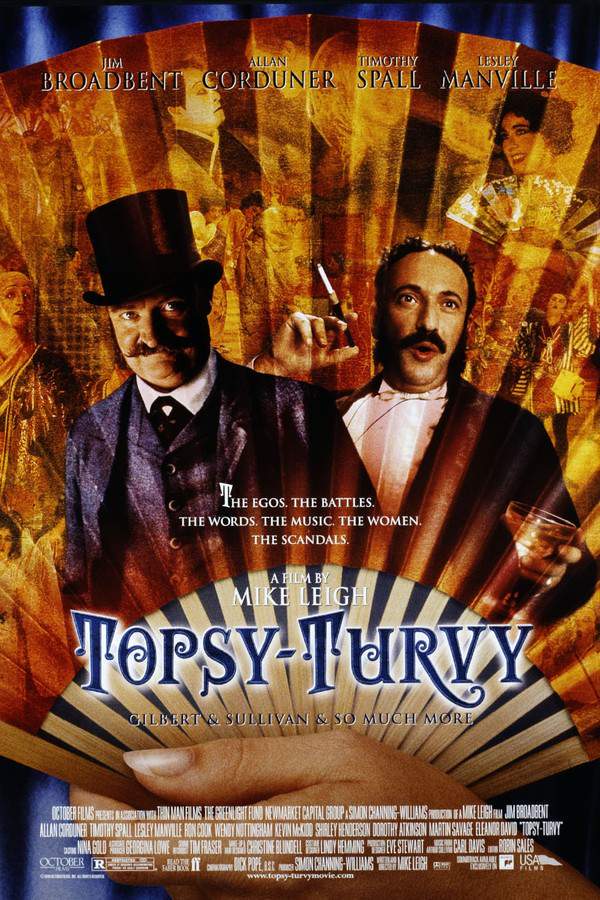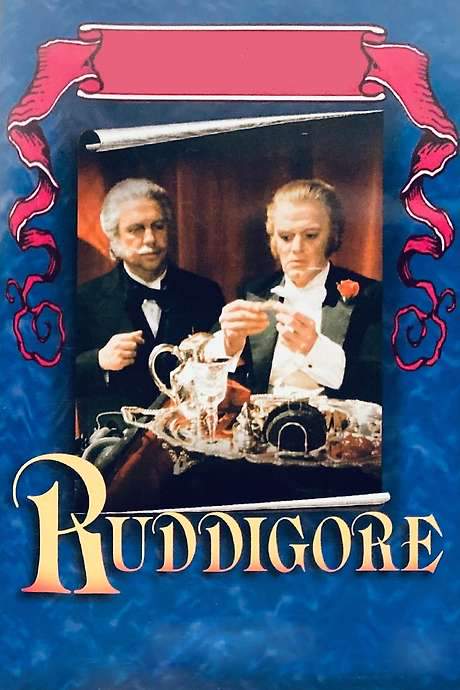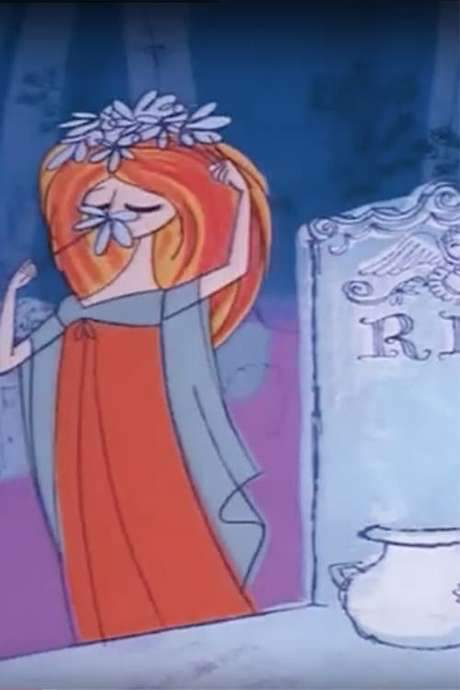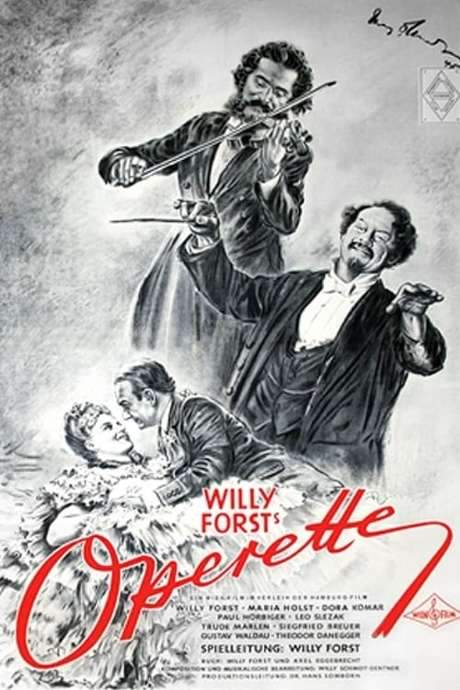
The Story of Gilbert and Sullivan
Year: 1953
Runtime: 109 mins
Language: English
Director: Sidney Gilliat
Gilbert, originally a barrister who became a comic librettist, and Sullivan, a classically trained composer reluctantly drawn to lighter music, formed a partnership that produced fifteen comic operas between 1871 and 1896. Their collaboration earned widespread public acclaim and remains a celebrated chapter in theatrical history.
Warning: spoilers below!
Haven’t seen The Story of Gilbert and Sullivan yet? This summary contains major spoilers. Bookmark the page, watch the movie, and come back for the full breakdown. If you're ready, scroll on and relive the story!
The Story of Gilbert and Sullivan (1953) – Full Plot Summary & Ending Explained
Read the complete plot breakdown of The Story of Gilbert and Sullivan (1953), including all key story events, major twists, and the ending explained in detail. Discover what really happened—and what it all means.
The story traces the evolving relationship between a gifted but uncertain artist, Arthur Sullivan [Maurice Evans], and the cultural force behind him, W.S. Gilbert [Robert Morley], as they navigate what it means to write music for the stage. Sullivan is urged by his friends and his fiancée, Grace [Dinah Sheridan], to aim for “serious” musical endeavors—dreams that include a cantata based on The Prodigal Son—yet he finds genuine acclaim in the light, comic touch of Trial by Jury, created in collaboration with Gilbert. This early success stirs mixed feelings: Sullivan’s talent is recognized, but Grace’s belief that he is wasting his gifts on trivial works casts a shadow over his future, hinting at the long shadow of criticism from the musical establishment that will shadow his career. The tension between a desire for artistic elevation and the lure of popular appeal becomes a throughline that shapes Sullivan’s choices and his working relationship with Gilbert.
Still wrestling with this dilemma, Sullivan enters a productive partnership with Gilbert and the impresario Richard D’Oyly Carte [Peter Finch], joining forces to craft more accessible operas that would reach broader audiences. The team produces The Sorcerer and, most famously, HMS Pinafore, works so successful that they are widely pirated in America, a reality that pushes the troupe to tour the United States to capitalize on the wave of enthusiasm. The Pirates of Penzance soon premieres in New York to widespread acclaim, and Carte responds by funding a new theatre in London to showcase the partnership’s oeuvre. The Savoy Theatre opens with the premiere of Iolanthe, an event that radiates excitement: Sullivan conducts the performance while Gilbert, anxious as ever, dodges the crowd outside before returning for a triumphant curtain call. The mood is buoyant, and the audience’s reaction seems to confirm that their blend of wit and melody has struck a chord. Yet behind the applause, Sullivan’s inner voice remains unsettled—he still longs to devote himself to more serious music, even as the public adores the lightness they’ve created together.
A pivotal moment arrives when Gilbert proposes a new piece built around the magical device of a lozenge, while Sullivan argues for keeping his focus on weightier musical ambitions. The dynamic tension between the two men deepens as Gilbert’s temperament—often irascible and sharp—meets Sullivan’s stubborn insistence on integrity in musical storytelling. Around this time, a friend and critic, [Joseph Bennett], writes a libretto for Sullivan’s cantata based on Longfellow’s The Golden Legend, suggesting a possible path toward “serious” composition. Yet Gilbert, inspired by the sight of a Japanese sword hanging in his study, pitches a fresh plot for a new comic opera, and Sullivan, drawn to the idea of a grander project, begins to sketch in earnest. Bennett visits Sullivan and learns that The Mikado is being rehearsed, not Bennett’s cantata, and the news serves as a reminder of how often literary and musical ambitions collide in the Savoy circle. When both works finally debut, Sullivan receives a knighthood, a public acknowledgment of his contributions to light music, even as he remains at odds with the notion that his art must stay light.
The pursuit of a grand opera continues to pull at Sullivan, and when Mrs. Helen D’Oyly Carte [Eileen Herlie] travels to Monte Carlo to check on her husband’s plans, she returns with news that he will build another theatre and wants Sullivan to compose an opera for it. Sullivan agrees, but Gilbert separately drafts yet another libretto for a comic piece, prompting Sullivan to accept that project as well, and The Gondoliers goes on to become another hit. Meanwhile, Gilbert, suffering from gout and in a particularly foul mood, scrutinizes the partnership’s finances, confronted by Carte over lavish expenditures, including a new carpet for the Savoy Theatre. Gilbert declares he will write no more Savoy operas, a vow that intensifies the strain between the two men even as a sustained string of successes continues on stage. Sullivan’s own ambitions steer him toward Ivanhoe, a grand opera that he presents to the Queen, while The Gondoliers remains a favorite for the public.
The Queen’s involvement in these events proves pivotal. She requests a private Windsor Castle performance of Sullivan’s work, but then chooses to hear The Gondoliers, a choice that reassures Sullivan that his future, even within the realm of lighter music, holds genuine significance. The two men—Sullivan and Gilbert—begin to imagine a revival of their partnership as the century turns, and Carte joins them in a quiet gesture of reconciliation, each of them in wheelchairs as they share a symbolic curtain call. Tragically, Sullivan’s death arrives during a rehearsal period for a revival of The Yeomen of the Guard, a somber reminder that even enduring collaborations must face mortality. In the years that follow, Gilbert is finally knighted, sealing a legacy that had both sparked controversy and sparked joy, and that ultimately bridged serious artistry with popular theater in a way that would endure in the memory of audiences around the world.
Last Updated: October 09, 2025 at 11:22
Unlock the Full Story of The Story of Gilbert and Sullivan
Don't stop at just watching — explore The Story of Gilbert and Sullivan in full detail. From the complete plot summary and scene-by-scene timeline to character breakdowns, thematic analysis, and a deep dive into the ending — every page helps you truly understand what The Story of Gilbert and Sullivan is all about. Plus, discover what's next after the movie.
The Story of Gilbert and Sullivan Timeline
Track the full timeline of The Story of Gilbert and Sullivan with every major event arranged chronologically. Perfect for decoding non-linear storytelling, flashbacks, or parallel narratives with a clear scene-by-scene breakdown.

Characters, Settings & Themes in The Story of Gilbert and Sullivan
Discover the characters, locations, and core themes that shape The Story of Gilbert and Sullivan. Get insights into symbolic elements, setting significance, and deeper narrative meaning — ideal for thematic analysis and movie breakdowns.

Similar Movies to The Story of Gilbert and Sullivan
Discover movies like The Story of Gilbert and Sullivan that share similar genres, themes, and storytelling elements. Whether you’re drawn to the atmosphere, character arcs, or plot structure, these curated recommendations will help you explore more films you’ll love.
Explore More About Movie The Story of Gilbert and Sullivan
The Story of Gilbert and Sullivan (1953) Scene-by-Scene Movie Timeline
The Story of Gilbert and Sullivan (1953) Movie Characters, Themes & Settings
The Story of Gilbert and Sullivan (1953) Spoiler-Free Summary & Key Flow
Movies Like The Story of Gilbert and Sullivan – Similar Titles You’ll Enjoy
Topsy-Turvy (1999) Movie Recap & Themes
Ruddigore (1982) Movie Recap & Themes
The Mikado (1983) Story Summary & Characters
The Mikado (1987) Full Summary & Key Details
Know Your Europeans: The United Kingdom (1994) Ending Explained & Film Insights
Ruddigore (1967) Ending Explained & Film Insights
The Tales of Hoffmann (1951) Ending Explained & Film Insights
The Show of Shows (1929) Complete Plot Breakdown
The Mikado (1967) Ending Explained & Film Insights
HMS Pinafore (1997) Detailed Story Recap
The Great Victor Herbert (1939) Detailed Story Recap
A Night at the Opera (1935) Detailed Story Recap
Operette (1940) Movie Recap & Themes
The Boy Friend (1971) Movie Recap & Themes
Words and Music (1948) Complete Plot Breakdown
















